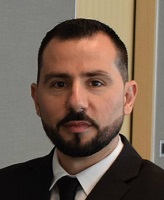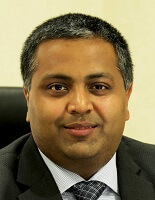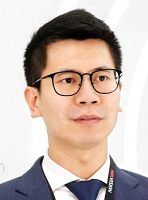Given that the economy continues to remain heavily dependent on oil, any fluctuations in the commodity’s price would have a direct impact on the market sentiments in the region.
Given that the economy continues to remain heavily dependent on oil, any fluctuations in the commodity’s price would have a direct impact on the market sentiments in the region.
This is a reality that security industry players, as with most other industries, have to be constantly aware of. Elaborating on this, Aditya Khemka, MD of
CP Plus, pointed out that although the Middle East market is expanding, its growth may not be as quick as those seen in some other parts of the world. Investment is mostly driven by initiatives like the Expo 2020 that is set to happen soon in Dubai. In this sense, there is a real need to educate customers about the importance of effective solutions.
Commoditization
Macroeconomic concerns aside, the Middle East is also grappling with the issue of product commoditization. According to Jamil Al Asfar, Senior Sales Manager for Middle East and Africa at
IDIS, this makes it critical to differentiate in the market. There are several ways solution providers can do this: through quality assurance, enhanced user experiences, value-add technologies such as analytics, hardened network security and data integrity, scalability and demonstrating a low total cost of ownership. Other industry experts agree.
"Product commoditization and budget constraints continued to pose challenges for security manufacturers in 2018,” said Pradeep Nair, VP for Sales in the Middle East, India and Africa at
Pelco by Schneider Electric. “Due to increased security system requirements, many developers and contractors prioritized cost-effectiveness of product over quality and long-term performance. This had paved the way for commoditized products and vendors to infiltrate the market.”
 Fahmi Jabri, Business Leader,
Fahmi Jabri, Business Leader,
Middle East, Africa and Turkey,
Honeywell Commercial Security
Nair added that, fortunately, this has not affected infrastructure and government projects, where end users prioritize factors including quality and performance (e.g., cybersecurity requirements), as critical to their product selection. Leading regional and international developers demonstrated similar behavior when selecting a manufacturer to meet their security needs.
Technological concerns
Considering the rapid pace at which technology is evolving at this point, solution providers and systems integrators (SIs) must go the extra mile to remain on top of their game. In other words, when it comes to business strategies and technical know-how, there is not much room for error.
“Commercial security solutions incorporate a wide array of technology driven subsystems,” said Fahmi Jabri, Business Leader in the Middle East, Africa and Turkey at
Honeywell Commercial Security. “Integration and interoperability of these subsystems are at the heart of solutions provided. As a result, the need for more complex, automated processes in the event of an alarm combined with surveillance transparency is growing.”
 Aditya Khemka,
Aditya Khemka,
MD, CP Plus
Given this situation, security solution providers must upgrade the skills of their engineers and technicians, Jabri continued. It’s not about pulling a coax cable and calibrating a camera anymore, it’s about designing a sophisticated IT network and requires deep knowledge of networks’ load and traffic balancing. In addition, integration of the different systems is not always straightforward, hence requiring skills of IT databases and programming languages.
Ettiene Van Der Watt, Regional Director for Business Development at
Axis Communications, conveyed similar thoughts as he indicated that solution providers and SIs would do well to differentiate between technologies that provide value and those that just look trendy.
“The market and technology are evolving at a rapid pace,” Van Der Watt said. “The biggest challenge would be to stay educated about changes and to partner with vendors who are constantly pushing boundaries with their innovation and relevant technologies. Another challenge is to also tread responsibly toward newer innovations, technologies and trends, and not fall victim to buzz alone.”
 Binson Xu,
Binson Xu,
Regional President,
Hikvision MENA
Other fears concerning the market situation
Speaking more on the market conditions, Binson Xu, Regional President at
Hikvision MENA, added that the competitive pressure is quite high at the moment and solution providers have to constantly engage in efforts to differentiate themselves. A major concern is that the market still remains fragmented to a large extent, with different industry application requirements in different market segments. This tends to increase the business complexity for the products and solutions vendors, who need to be good at offering customization matching those needs.
“To overcome these, there is a need to enhance product quality and service while meeting the most common needs, and increase the differentiated advantage to meet customer needs better, which are all covered in Hikvision’s development strategy to overcome new challenges,” Xu noted. “Further broaden the product line, further improve software support, and increase cooperation with the third-party software and hardware partners.”